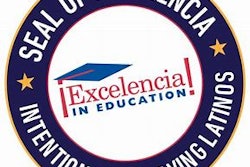After two decades of prayers, politicking and impassioned pleas, tribal colleges have gained greater access to federal grants under an executive order signed by President Clinton.
“Hot damn,” said an elated Dr. Janine Pretty On Top, president of Little Big Horn College on the Crow reservation in Montana. “It’s a big coup for such a small group of colleges.”
Pretty On Top and other officials with the nation’s twenty-nine tribal-run colleges have been pressing every administration for such an order since President Carter was in office. The order, similar to ones for historically Black colleges and universities and Hispanic-serving institutions, requires federal agencies to consider the colleges for contracts and grants.
Called the White House Initiative on Tribal Colleges and Universities, it also creates an advisory panel that will annually grade the agencies’ progress. The panel also will push for the colleges’ accreditation, promote preservation of native languages and cultures, and strengthen the schools’ links to other education programs.
The tribal colleges, which stretch from California to Wisconsin, have been overlooked in the past because of their small size and remote locations, Native-American officials said.
“There has been a tendency to believe all Indians are taken care of through the Bureau of Indian Affairs,” said Dr. Gerald Monette, president of the American Indian Higher Education Consortium. The colleges, chartered by tribes to serve 25,000 students in twelve states, rely on the federal government for 50 percent to 90 percent of their funding. But that has not been enough. Research indicates tribal colleges received an average of $2,900 for each full-time student last year. That compares to $6,200 per student for most other community colleges.
“It’s been difficult times for tribal colleges because of the cutbacks in federal spending,” Monette said. “They have been treated like other parts of the government and had to scale back.” Although the tribal colleges have been authorized to receive up to $40 million, Monette said that the colleges “have never seen close to that amount.” For the past two years, the schools have received about $20 million. And unlike their counterparts, mainstream community colleges, the tribal colleges in most cases receive no money from the states in which they are located.















